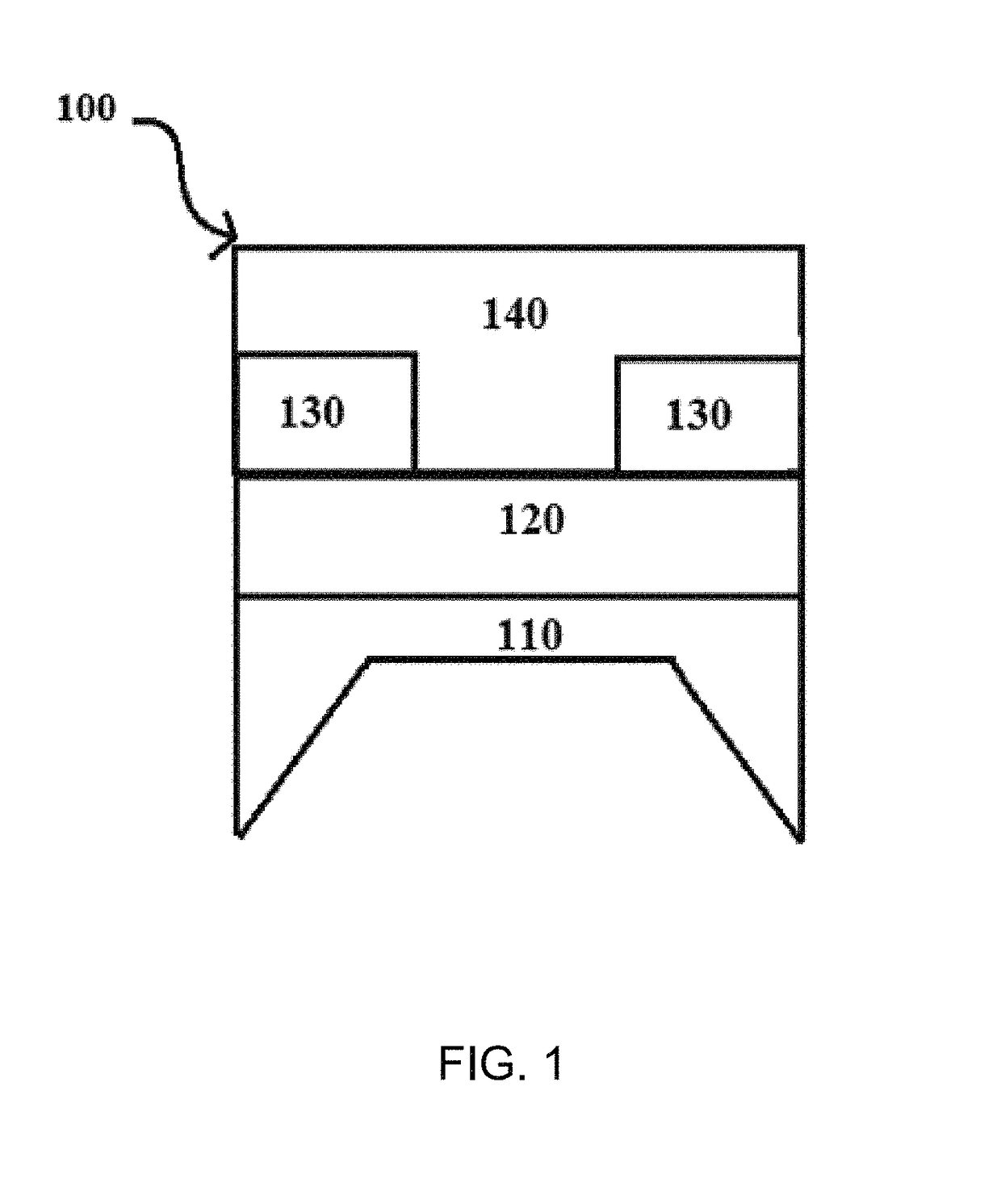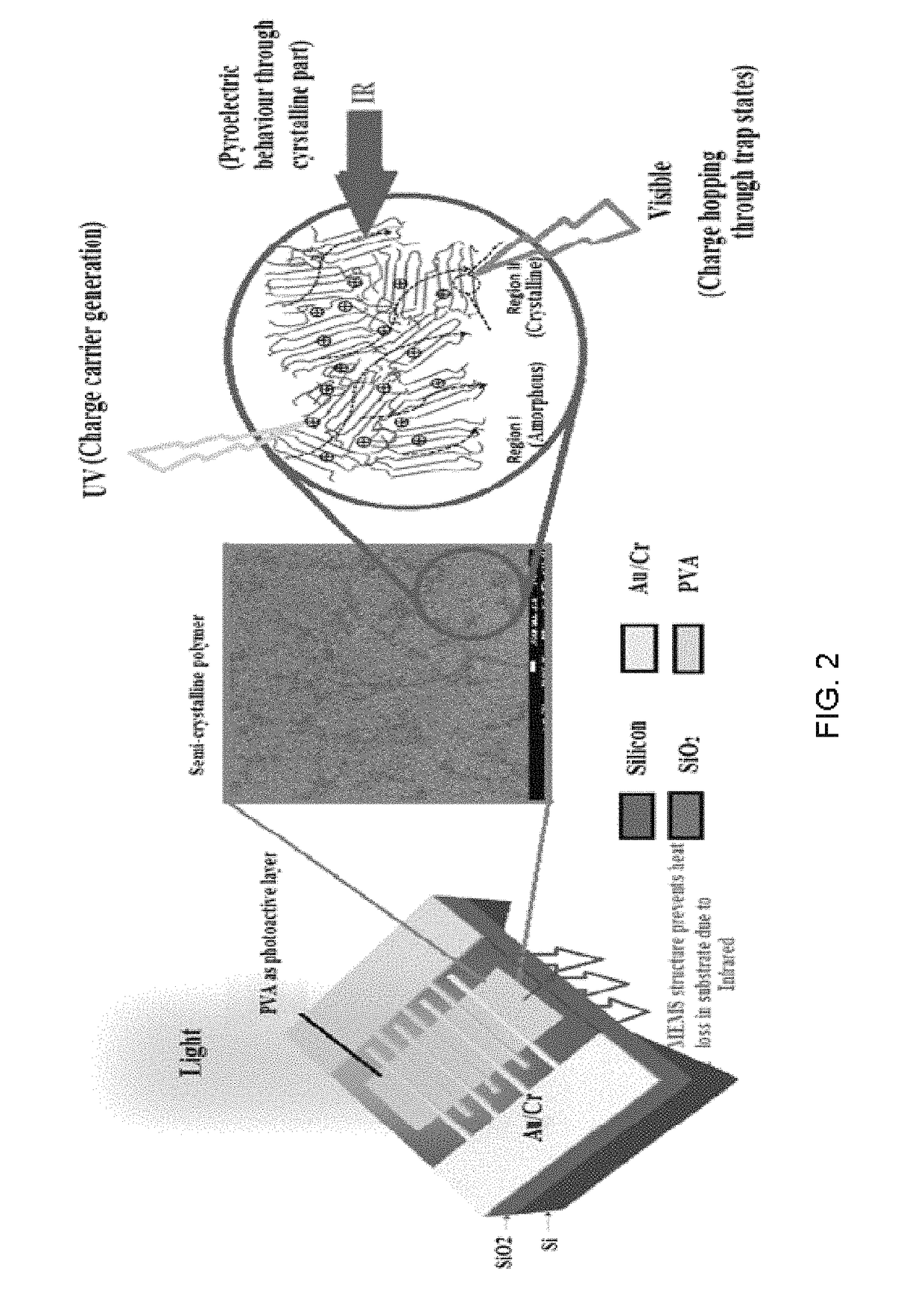Micro electro mechanical system (MEMS) based wide-band polymer photo-detector
a micro electro mechanical and wide-band technology, applied in the field of polymer photodetectors, can solve the problems of limited applicability, low quantum efficiency, and operation within visible waveband and near infrared
- Summary
- Abstract
- Description
- Claims
- Application Information
AI Technical Summary
Benefits of technology
Problems solved by technology
Method used
Image
Examples
Embodiment Construction
[0025]The present disclosure relates to a polymer photo-detector comprising a single photoactive Polyvinyl Alcohol (PVA) polymer layer having wideband (Ultraviolet-Visible to Infra-red) photo-detection as well as photoconductive and pyroelectric capability. The following description with reference to accompanying drawings is presented to enable one of ordinary skill in the art to make and use the invention and is provided in the context of patent application and its requirements.
[0026]As illustrated in FIG. 1, according to an embodiment, a MEMS based photo-detector device 100 includes a Silicon substrate 110 (a p-type or n-type substrate); an insulating SiO2 layer 120; and a single photoactive Polyvinyl Alcohol (PVA) layer 140 between metal electrodes of Gold 130. The photo-detector is illuminated in the Ultraviolet-Visible light, and charge carriers (singlet excitons, Polarons, and Polaron pairs) are produced in the polymer film. The Exciton generation mechanism is not dominant und...
PUM
| Property | Measurement | Unit |
|---|---|---|
| thickness | aaaaa | aaaaa |
| responsivity | aaaaa | aaaaa |
| response time | aaaaa | aaaaa |
Abstract
Description
Claims
Application Information
 Login to View More
Login to View More - R&D
- Intellectual Property
- Life Sciences
- Materials
- Tech Scout
- Unparalleled Data Quality
- Higher Quality Content
- 60% Fewer Hallucinations
Browse by: Latest US Patents, China's latest patents, Technical Efficacy Thesaurus, Application Domain, Technology Topic, Popular Technical Reports.
© 2025 PatSnap. All rights reserved.Legal|Privacy policy|Modern Slavery Act Transparency Statement|Sitemap|About US| Contact US: help@patsnap.com



